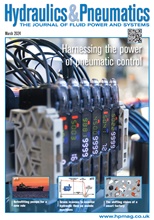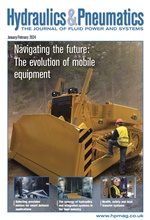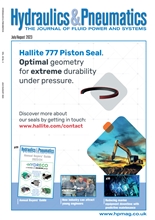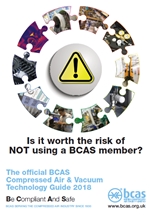- Home » Editorial » Pneumatics
Elesa considers uses for pneumatic clamps

An important part used across several industries; pneumatic clamps are components that are actuated by compressed air. They are used for quick and frequent clamping and are very valuable components to have in the workplace as they can prevent the muscle and joint strain that occurs from manual clamping.
As the name suggests, they differ from manual clamps in that they are operated pneumatically. By providing mechanical locking through the actuation of compressed air, the clamps are ideal for use in many clamping processes. The reduced size of Elesa pneumatic clamps means that the components can be used where the clamping point is inaccessible for manual operation and to reduce the weight of the final application.
These components are simple but useful. They are cost effective, durable, and easy to install. As they are actuated by air rather than oil, they are also a more sustainable choice of clamp. Pneumatic clamps are widely used in the following industries: Automotive; chemical plants; electronics; paper mills; textiles; food and pharmaceuticals; refineries; metal works; and work benches.
These versatile components can perform linear, swivel and rotary motions such as embossing, sorting, stamping, inverting and stacking.
Elesa’s range of ergonomic clamps are made using high quality steel and technopolymer to result in an effective and reliable component.
Heavy-duty pneumatic clamps
Elesa’s heavy-duty clamps are available in the following executions: Open clamping lever and two folding washers; magnetic cylinder, open clamping lever and two folded washers; solid clamping lever and bolt retainer; magnetic cylinder, solid clamping lever and retainer for welding.
Elesa pneumatic clamps are equipped with a magnetic cylinder to give drive and control impulses in operation. The articulated joints of the clamps are lubricated with special grease to ensure the cylinder is long-lasting. As well as being durable, our pneumatic clamps also have a high clamping force and low consumption of compressed air and reduced weight – qualities that help save time and money.
Pneumatic fastening clamps
Elesa’s range of pneumatic fastening clamps are made using quality nickel-plated steel and have a 10-bar maximum working pressure.
These components are available in various executions for side or axial locking. They feature a ‘double effect’ pneumatic cylinder which transmits a rotating movement to the clamping arm, the high performance of which has been proven for than 20 million test cycles.
Elesa can supply modified components. Some of the special executions available include fastening clamps with: Teflon coating for high temperature and corrosion applications; FKM sealing gasket resistant to max working temperatures up to 270degC; arm rotating movement and locking in the 20 deg position; and arm rotating movement and locking in the 45 deg position.
https://www.linkedin.com/company/elesa-uk/
-
Smart Manufacturing & Engineering Week
05 - 06 June, 2024
NEC, Birmingham -
HILLHEAD 2024
25 June, 2024, 9:00 - 27 June, 2024, 16:00
Hillhead Quarry, Buxton, Derbyshire UK










